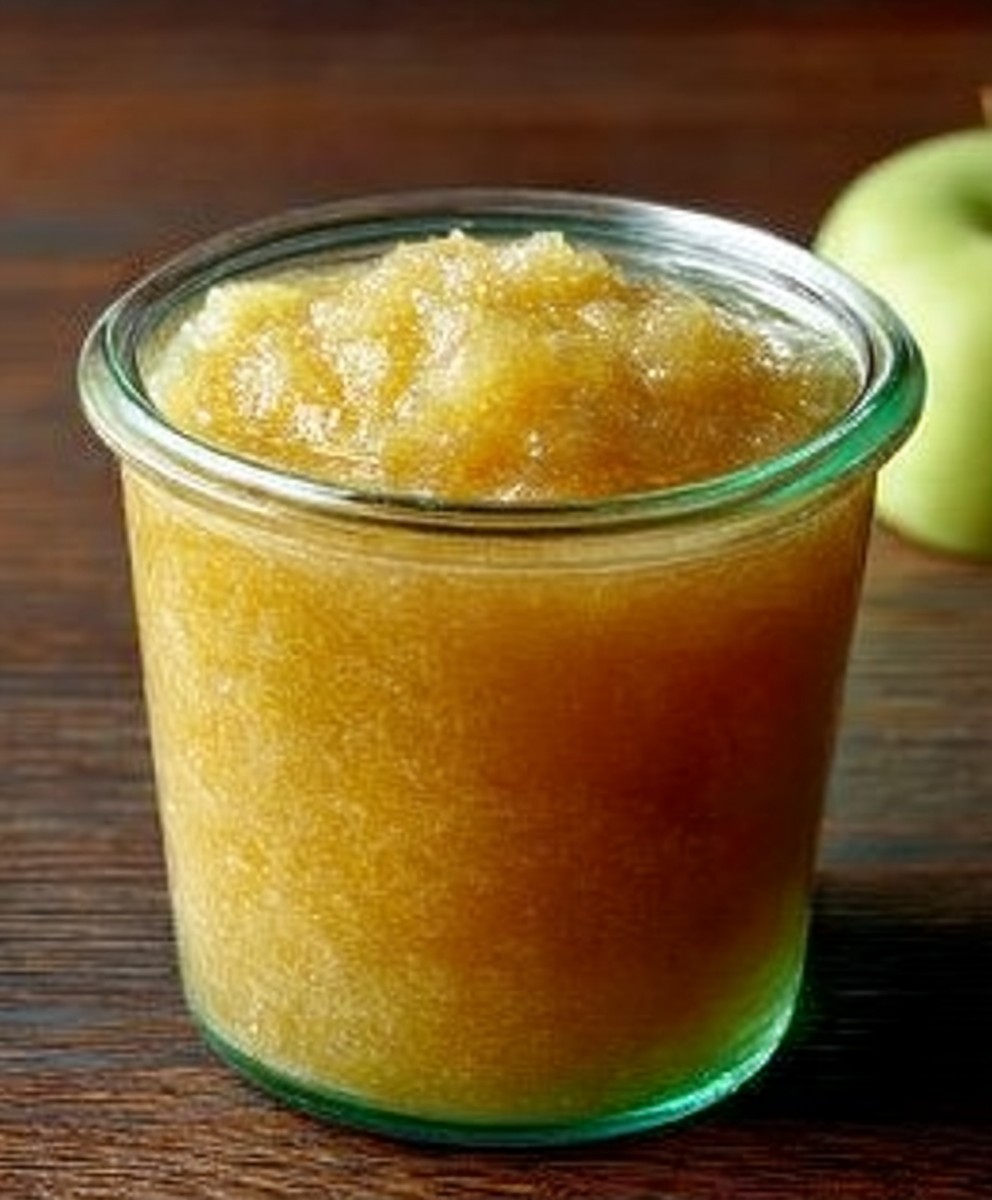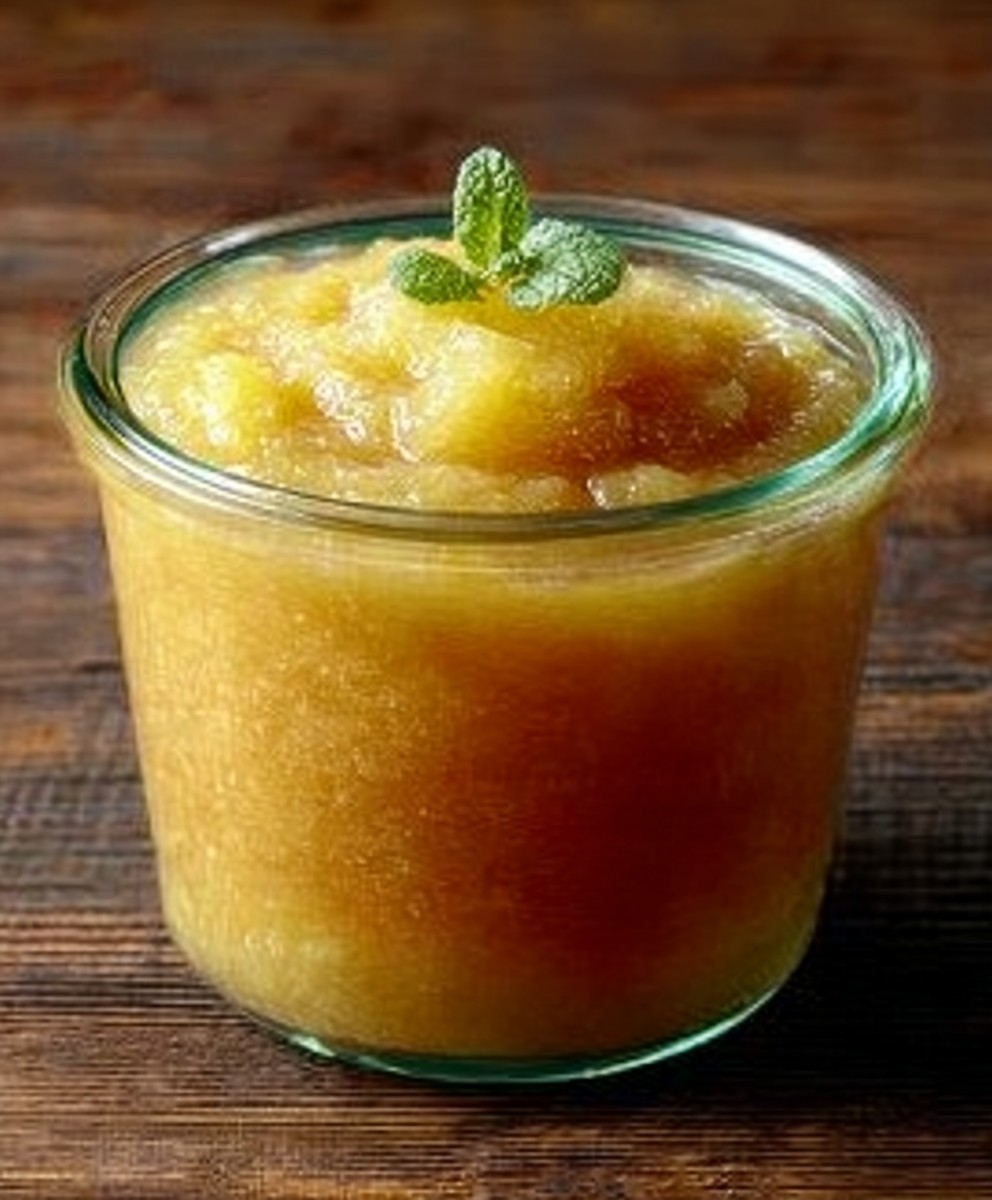Old Fashioned Applesauce: the very words conjure up images of cozy kitchens, the scent of cinnamon and warm apples filling the air. But this isn’t just a recipe; it’s a taste of nostalgia, a comforting spoonful of simpler times. Have you ever wondered why something so simple can evoke such powerful memories? For generations, applesauce has been a staple in homes, a testament to resourcefulness and the deliciousness of nature’s bounty.
Applesauce boasts a rich history, dating back to when preserving fruits was essential for surviving the winter months. It was a way to enjoy the sweetness of apples long after the harvest. Beyond its practical purpose, applesauce became a symbol of home-cooked goodness, often associated with family gatherings and holiday feasts.
What makes old fashioned applesauce so irresistible? It’s the perfect balance of sweet and tart, the smooth, velvety texture that melts in your mouth. It’s incredibly versatile, enjoyed as a side dish, a healthy snack, or even as an ingredient in baking. Plus, it’s incredibly easy to make, requiring just a few simple ingredients and minimal effort. So, are you ready to experience the magic of homemade applesauce? Let’s get started!
Ingredients:
- 6 pounds apples (such as Gala, Honeycrisp, Fuji, or a mix), peeled, cored, and quartered
- 1/2 cup water (more if needed)
- 1/4 cup granulated sugar (adjust to taste based on apple sweetness)
- 1 tablespoon lemon juice
- 1 teaspoon ground cinnamon
- 1/2 teaspoon ground nutmeg
- 1/4 teaspoon ground cloves (optional)
- Pinch of salt
- 2 tablespoons unsalted butter (optional, for added richness)
Preparing the Apples
- Prepare the Apples: First things first, let’s get those apples ready! Peel, core, and quarter all 6 pounds of apples. Don’t worry about being too precise with the quartering; they’re going to cook down anyway. I like to use a mix of apple varieties for a more complex flavor, but feel free to stick with your favorite. Gala and Honeycrisp are always a good starting point.
- Combine Ingredients in a Pot: Now, in a large, heavy-bottomed pot or Dutch oven, combine the quartered apples, water, sugar, lemon juice, cinnamon, nutmeg, cloves (if using), and salt. The heavy-bottomed pot will help prevent scorching, which is definitely something we want to avoid.
Cooking the Applesauce
- Bring to a Simmer: Place the pot over medium heat and bring the mixture to a simmer. Stir occasionally to prevent the apples from sticking to the bottom of the pot. Once it starts simmering, reduce the heat to low.
- Simmer Until Soft: Cover the pot and let the apples simmer for about 20-30 minutes, or until they are very soft and easily pierced with a fork. The exact cooking time will depend on the type of apples you’re using and how large the pieces are. Check on them periodically and stir to ensure even cooking. If the apples start to stick or the liquid evaporates too quickly, add a little more water, a tablespoon at a time.
- Mash the Apples: Once the apples are soft, remove the pot from the heat. Now comes the fun part! You have a few options for mashing the apples:
- Potato Masher: For a chunkier applesauce, use a potato masher to break down the apples to your desired consistency. This is my preferred method for a rustic, homemade feel.
- Immersion Blender: For a smoother applesauce, use an immersion blender directly in the pot. Be careful not to splash! Start on a low speed and gradually increase it until you reach the desired smoothness.
- Food Mill: For the smoothest applesauce, use a food mill. This will remove any skins or seeds that might have snuck in, resulting in a silky-smooth texture.
Choose the method that best suits your preference. I usually go for the potato masher because I like a little texture in my applesauce.
- Add Butter (Optional): If you’re feeling fancy (and I often am!), stir in the butter until it’s melted and fully incorporated. This adds a lovely richness and depth of flavor to the applesauce.
- Taste and Adjust: Now, give the applesauce a taste and adjust the seasonings as needed. If it’s not sweet enough for your liking, add a little more sugar. If it needs a bit more tang, add a squeeze of lemon juice. And if you want a more intense spice flavor, add a pinch more cinnamon, nutmeg, or cloves. Don’t be afraid to experiment and make it your own!
Serving and Storing
- Serve Warm or Cold: Your old-fashioned applesauce is now ready to be enjoyed! You can serve it warm, straight from the pot, or chilled in the refrigerator. It’s delicious on its own, as a side dish, or as a topping for yogurt, oatmeal, or pancakes.
- Store Leftovers: If you have any leftovers (and you probably will, unless you have a crowd to feed!), store them in an airtight container in the refrigerator for up to 5-7 days.
- Freezing Applesauce: Applesauce also freezes beautifully! To freeze, let the applesauce cool completely. Then, transfer it to freezer-safe containers or freezer bags, leaving a little headspace to allow for expansion. Label and date the containers, and freeze for up to 2-3 months. To thaw, transfer the frozen applesauce to the refrigerator overnight.
Tips and Variations
- Apple Varieties: As I mentioned earlier, using a mix of apple varieties will give your applesauce a more complex and interesting flavor. Some other good options include Braeburn, McIntosh, and Cortland.
- Sweetness: The amount of sugar you need will depend on the sweetness of your apples. Start with 1/4 cup and adjust to taste. You can also use other sweeteners, such as maple syrup or honey, if you prefer.
- Spices: Feel free to experiment with different spices. Ginger, cardamom, and allspice are all delicious additions to applesauce.
- Cinnamon Sticks: For a more subtle cinnamon flavor, add a cinnamon stick to the pot while the apples are simmering. Remove it before mashing the apples.
- Brown Sugar: For a richer, caramel-like flavor, use brown sugar instead of granulated sugar.
- Apple Cider: Replace some of the water with apple cider for an extra apple-y flavor.
- Vanilla Extract: Add a teaspoon of vanilla extract after mashing the apples for a touch of sweetness and aroma.
- Caramel Applesauce: For a decadent treat, stir in a tablespoon or two of caramel sauce after mashing the apples.
- Cranberry Applesauce: Add a cup of fresh or frozen cranberries to the pot along with the apples for a festive twist.
- Spiced Apple Butter: Continue cooking the applesauce after mashing it, stirring frequently, until it thickens into a spreadable consistency. This will take about 1-2 hours.
Troubleshooting
- Applesauce is too thin: If your applesauce is too thin, continue cooking it over low heat, uncovered, until it thickens to your desired consistency. Stir frequently to prevent sticking.
- Applesauce is too thick: If your applesauce is too thick, add a little water or apple cider, a tablespoon at a time, until it reaches your desired consistency.
- Applesauce is too tart: If your applesauce is too tart, add a little more sugar or honey.
- Applesauce is too sweet: If your applesauce is too sweet, add a squeeze of lemon juice.
- Apples are sticking to the pot: If the apples are sticking to the pot, reduce the heat and add a little more water. Stir frequently to prevent burning.
Serving Suggestions
- As a side dish: Serve applesauce alongside roasted pork, chicken, or turkey.
- As a topping: Top yogurt, oatmeal, pancakes, or waffles with applesauce.
- As an ingredient: Use applesauce in baking recipes, such as muffins, cakes, or breads. It can be used as a substitute for oil or butter in some recipes.
- As a snack: Enjoy a bowl of applesauce as a healthy and delicious snack.
- With ice cream: Top a scoop of vanilla ice cream with warm applesauce and a sprinkle of cinnamon.
- With cheese: Serve applesauce with a sharp cheddar cheese for a sweet and savory combination.
- In a grilled cheese sandwich: Spread applesauce on the inside of a grilled cheese sandwich for a surprising and delicious twist.
- As a baby food: Homemade applesauce is a great first food for babies.
Nutritional Information (Approximate)
(Note: Nutritional information is an estimate and will vary depending on the specific ingredients used.)
- Serving Size: 1/2 cup
- Calories: 80-100
- Total Fat: 0-2g
- Saturated Fat: 0-1g
- Cholesterol: 0-5mg
- Sodium: 0-20mg
- Total Carbohydrate: 20-25g
- Dietary Fiber: 2-3g
- Sugars: 15-20g
- Protein: 0-1g
Enjoy your homemade old-fashioned applesauce!

Conclusion:
This Old Fashioned Applesauce isn’t just a recipe; it’s a warm hug in a bowl, a taste of simpler times, and a guaranteed crowd-pleaser. From the delightful aroma that fills your kitchen as it simmers to the satisfyingly sweet and slightly tart flavor, every spoonful is a testament to the magic of simple, wholesome ingredients. I truly believe this is a must-try recipe for anyone who appreciates homemade goodness.
Why is it a must-try? Because it’s incredibly easy to make, requiring minimal effort for maximum flavor payoff. Forget the store-bought stuff loaded with preservatives and artificial sweeteners. This recipe allows you to control exactly what goes into your applesauce, ensuring a healthy and delicious treat for yourself and your loved ones. Plus, it’s a fantastic way to use up a surplus of apples, especially during apple season.
But the best part? It’s incredibly versatile! Serve it warm, straight from the pot, for a comforting dessert on a chilly evening. Or chill it and enjoy it as a refreshing snack on a hot day. It’s also a wonderful accompaniment to savory dishes like roasted pork, grilled chicken, or even latkes.
Looking for variations? Get creative! A dash of cinnamon and nutmeg is classic, but don’t be afraid to experiment with other spices like cardamom, ginger, or even a pinch of cloves. For a richer flavor, try using brown sugar instead of white sugar. And if you’re feeling adventurous, add a splash of apple cider vinegar or lemon juice for a brighter, more complex flavor profile. You can also incorporate other fruits like pears or cranberries for a unique twist. For a chunkier applesauce, simply reduce the cooking time slightly and mash the apples less thoroughly. For a smoother texture, use an immersion blender or food processor after cooking.
Serving suggestions abound! Top it with a dollop of whipped cream or Greek yogurt for a decadent dessert. Sprinkle it with granola or chopped nuts for added texture and crunch. Use it as a filling for pies or tarts. Spread it on toast or pancakes. The possibilities are endless!
I’m confident that once you try this Old Fashioned Applesauce recipe, it will become a staple in your kitchen. It’s a simple, satisfying, and incredibly versatile dish that’s perfect for any occasion.
So, what are you waiting for? Gather your apples, dust off your pot, and get cooking! I can’t wait to hear about your experience. Did you try any variations? What did you serve it with? Share your photos and stories in the comments below. Let’s spread the love for homemade applesauce! I’m eager to see your creations and learn from your culinary adventures. Happy cooking! I hope you enjoy this recipe as much as I do. It’s a true taste of home.
Old Fashioned Applesauce: The Ultimate Guide to Homemade Goodness
Classic, homemade applesauce made with fresh apples and warm spices. A simple and comforting recipe perfect for any occasion.
Ingredients
- 6 pounds apples (such as Gala, Honeycrisp, Fuji, or a mix), peeled, cored, and quartered
- 1/2 cup water (more if needed)
- 1/4 cup granulated sugar (adjust to taste based on apple sweetness)
- 1 tablespoon lemon juice
- 1 teaspoon ground cinnamon
- 1/2 teaspoon ground nutmeg
- 1/4 teaspoon ground cloves (optional)
- Pinch of salt
- 2 tablespoons unsalted butter (optional, for added richness)
Instructions
- Prepare the Apples: Peel, core, and quarter the apples.
- Combine Ingredients in a Pot: In a large, heavy-bottomed pot or Dutch oven, combine the apples, water, sugar, lemon juice, cinnamon, nutmeg, cloves (if using), and salt.
- Bring to a Simmer: Place the pot over medium heat and bring the mixture to a simmer, stirring occasionally. Reduce heat to low.
- Simmer Until Soft: Cover and simmer for 20-30 minutes, or until the apples are very soft. Stir occasionally, adding more water if needed to prevent sticking.
- Mash the Apples: Remove from heat and mash using a potato masher (for chunkier sauce), an immersion blender (for smoother sauce), or a food mill (for the smoothest sauce).
- Add Butter (Optional): Stir in butter until melted and fully incorporated.
- Taste and Adjust: Taste and adjust seasonings as needed, adding more sugar, lemon juice, or spices to your preference.
- Serve Warm or Cold: Serve warm or chilled.
- Store Leftovers: Store in an airtight container in the refrigerator for up to 5-7 days.
- Freezing Applesauce: Let the applesauce cool completely. Then, transfer it to freezer-safe containers or freezer bags, leaving a little headspace to allow for expansion. Label and date the containers, and freeze for up to 2-3 months. To thaw, transfer the frozen applesauce to the refrigerator overnight.
Notes
- Apple Varieties: Use a mix of apple varieties for a more complex flavor.
- Sweetness: Adjust the amount of sugar based on the sweetness of your apples.
- Spices: Experiment with different spices like ginger, cardamom, or allspice.
- Cinnamon Sticks: For a more subtle cinnamon flavor, add a cinnamon stick to the pot while the apples are simmering. Remove it before mashing the apples.
- Brown Sugar: For a richer, caramel-like flavor, use brown sugar instead of granulated sugar.
- Apple Cider: Replace some of the water with apple cider for an extra apple-y flavor.
- Vanilla Extract: Add a teaspoon of vanilla extract after mashing the apples for a touch of sweetness and aroma.
- Caramel Applesauce: For a decadent treat, stir in a tablespoon or two of caramel sauce after mashing the apples.
- Cranberry Applesauce: Add a cup of fresh or frozen cranberries to the pot along with the apples for a festive twist.
- Spiced Apple Butter: Continue cooking the applesauce after mashing it, stirring frequently, until it thickens into a spreadable consistency. This will take about 1-2 hours.





Leave a Comment